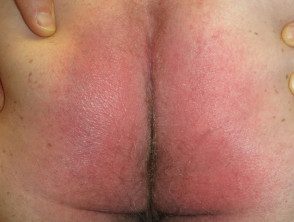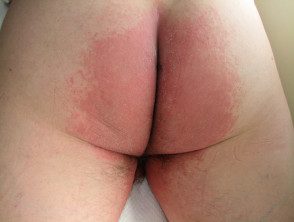What is it symmetrical drug related intertriginous and flexural exanthema?
Drug-related symmetric flexural intertriginous rash (SDRIFE) describes a distinctive erythematous eruption what happens in the skin folds after systemic exposure to a food or drug.
The substance can be taken orally, injected or absorbed by some other route, resulting in general exposure of the body.
Also called baboon syndrome when the predominantly affected area is the buttocks, as was the case in the first patients described with the reaction.
What are the symptoms of drug-related symmetric intertriginous and flexural exanthema?
The clinical picture of SDRIFE is well defined redness of the buttocks, natal cleft and / or upper inner thighs that resemble the red underside of baboons. The redness often forms a V shape. The neck, armpits, and other skin folds may be involved, usually symmetrically, but sometimes only on one side. The affected person is not unwell and the rash is not accompanied by any other symptoms.
Drug-related symmetric intertriginous and flexural exam. Baboon syndrome.

Baboon syndrome. Drug-related symmetric intertriginous and flexural exam. SDRIFE

Baboon syndrome. Drug-related symmetric intertriginous and flexural exam. SDRIFE
What Causes Drug-Related Symmetric Intertriginous and Flexural Rash?
In classic SDRIFE, the initial sensitization is by skin contact with the causative agent, then a rash with the particular appearance of baboon syndrome occurs when the agent is taken orally (systemic contact dermatitis) It is not fully understood why the eruption should occur in these particular areas.
Classic baboon syndrome was originally seen with mercury, nickel, and ampicillin.
Since then, more than 100 cases of SDRIFE have been described, most of them without prior knowledge sensitization the causative agent. At least 50 causative medications have been reported to cause SDRIFE, including prescription and on the counter Products Amoxicillin and other beta-lactam antibiotics account for about half of the cases. Other miscellaneous causal drugs they have included pseudoephedrine, codeine, allopurinol, cimetidine, and nystatin.
Investigations in drug-related symmetric intertriginous and flexural exanthema
Patch The tests can be done several weeks after the patient has recovered from SDRIFE, and they can show a positive reaction to the suspected causative agent. An oral "challenge" may be given to the suspect.
Skin biopsy of affected skin may reveal a superficial mixture perivascular inflammation.
Management of drug-related symmetric intertriginous and flexural exanthema
The most important treatment at SDRIFE is to identify and stop the causative agent. The patient should be counseled to avoid the offending medication for life. Current steroids can reduce the redness while the reaction resolves.

